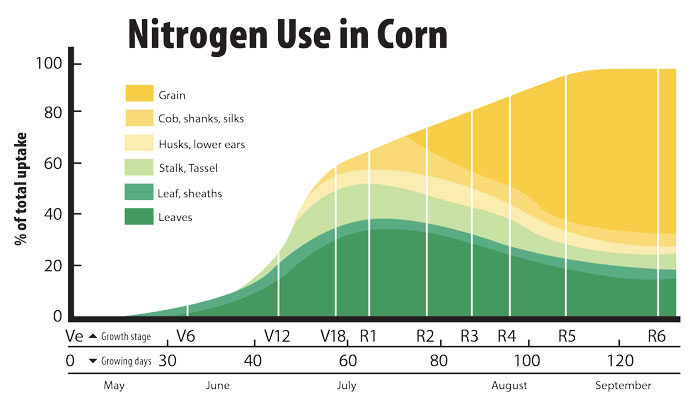No-Till Farmer
Get full access NOW to the most comprehensive, powerful and easy-to-use online resource for no-tillage practices. Just one good idea will pay for your subscription hundreds of times over.

LATE ‘N’ UPTAKE. Data from research scientist Jason DeBruin of Corteva indicates that today’s corn hybrids are using more nitrogen (N) later in the growing season, which suggests that spoon-feeding N later in the season is more likely to provide nutrients when they’re needed.
Mike Starkey operates a 7th generation family farm in Brownsburg, Ind., right across the road from a K-8 school and the biggest church in the Archdiocese of Indianapolis. Farming in an urban area has some advantages, like being able to easily make it to Colts and Pacers games (Starkey is a season ticket holder). But the environment also comes with the usual challenges.
“I have to educate as best as I can the urban neighbors (about airplanes dropping cover crop seeds),” Starkey says. “I plan around the traffic. I don’t dare move the equipment between 6 and 8 a.m., or after 4 p.m., or when the kids get out of school at 2:30 p.m.”
Starkey Farms stretches over 2,500 acres in Hendricks and Boone Counties, where the family raises corn, soybeans, wheat, hay and beef cattle. As a no-tiller, Starkey’s ability to adapt and embrace change is critical to the operation.
“You’ve got to learn from your mistakes, which I’ve done quite a bit. And, if that opportunity exists, make the change.”
Over the past 20-plus years Starkey hasn’t shied away from switching things up, especially when it comes to the application of nitrogen (N) to corn. He’s been calling audibles in that department since 2002, when he started adding Thio-Sul to the application of N with his planter.
“Now anytime retailers sell nitrogen they always recommend Thio-sul,” Starkey says. “Times have changed. They realize our soils are so short of sulfur. If you’re not putting…